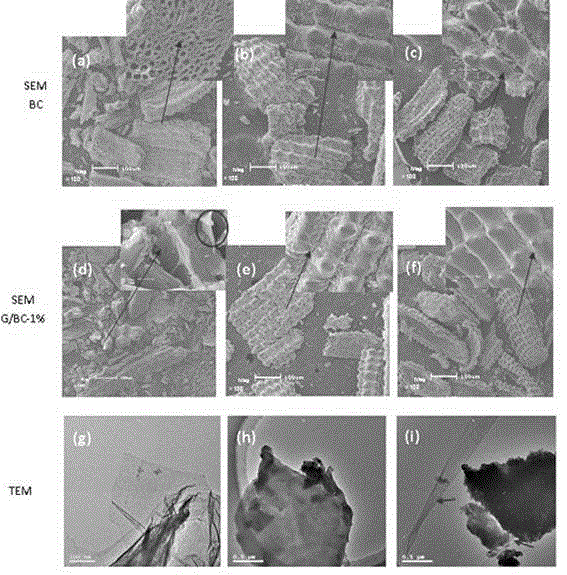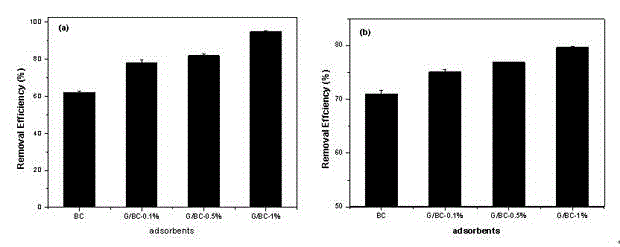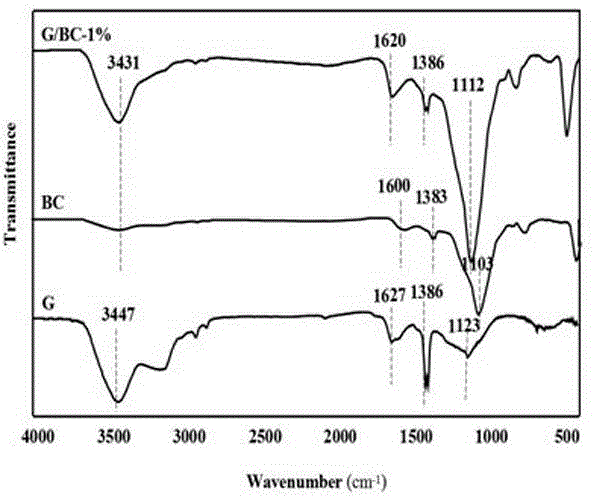Biological carbon/graphene composite used for adsorbing organic/inorganic pollutant in water body and preparation method
A technology of organic pollutants and composite materials, applied in the field of biochar/graphene composite materials and its preparation, can solve the problems of reducing the adsorption capacity of pollutants, narrow application range, and complicated preparation methods
- Summary
- Abstract
- Description
- Claims
- Application Information
AI Technical Summary
Problems solved by technology
Method used
Image
Examples
Embodiment
[0017] In order to investigate the adsorption effect of G / BC on low-concentration phenanthrene and mercury(II) in wastewater, the experimental groups were set up as follows: (1) biochar (BC); (2) G / BC-0.1%; (3) G / BC BC - 0.5%; (4) G / BC - 1%; (5) Control group, only wastewater (CK).
[0018] Add 120mL of a phenanthrene solution with a concentration of 1000ppb to a 120mL brown glass bottle with a polytetrafluoroethylene-lined lid, and add 28mL of a mercury (II) solution with a concentration of 400ppb to a 30mL polytetrafluoroethylene bottle, and follow the above settings to arrange experiments. The reaction experiment of phenanthrene was equilibrated for 3 days in a reciprocating shaker at 150rpm, 25oC, protected from light, and the reaction experiment of mercury(II) was equilibrated for 5 days on a rotary shaker at 40rpm, 25oC. All experiments Both the control group and the control group were set up in three parallel groups. After the experiment was completed, the supernatant...
PUM
 Login to View More
Login to View More Abstract
Description
Claims
Application Information
 Login to View More
Login to View More - R&D
- Intellectual Property
- Life Sciences
- Materials
- Tech Scout
- Unparalleled Data Quality
- Higher Quality Content
- 60% Fewer Hallucinations
Browse by: Latest US Patents, China's latest patents, Technical Efficacy Thesaurus, Application Domain, Technology Topic, Popular Technical Reports.
© 2025 PatSnap. All rights reserved.Legal|Privacy policy|Modern Slavery Act Transparency Statement|Sitemap|About US| Contact US: help@patsnap.com



